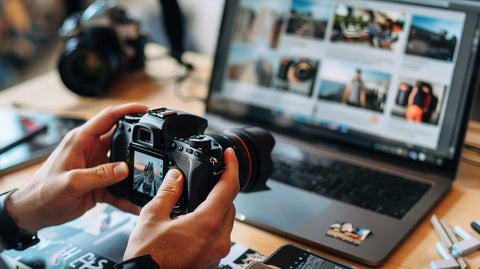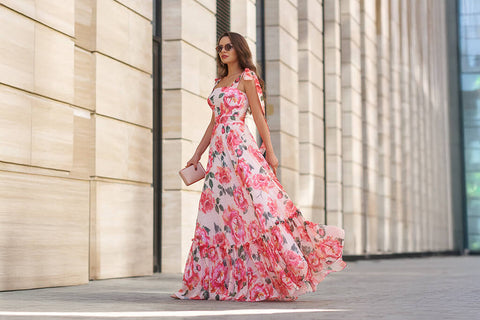-
Lightroom Presets
- Mobile Presets
-
Photoshop
-
Learn
-
Support
-
Install
- Best Sellers
- Blog
By Anna Gay on | No Comments

Do you feel unsure of what to look for and what needs to be edited in your photos, but when someone else looks at them, they find all sorts of things that can be edited?
There are typically a few reasons why this might be happening. First, everyone interprets a photo differently and has their own style, so you will always find someone who can offer a suggestion to improve your photo, no matter how perfect it may be to your eye.
Second, your photo may actually need some improvements, and you are simply missing some steps between setting up your shot and your final edit. In this post, we will guide you through some tips that will help you know what to look for when you are editing, and also some ways that you can get things right in camera, which will help you bypass some steps in your editing process!
Before you even think about pressing the shutter, notice what is in your frame - this will save you a step in editing. Is there anything in your frame that will distract from the subject in the final image? If so, find ways to move around and re-frame your shot so that whatever is distracting (cars, traffic cones/signs, random strangers, telephone poles, etc.) is not in your frame.
In most shooting/editing situations, the goal is not to chop off body parts in an image, so make sure you are not cropping directly on any fingers, arms, or joints at strange places (such as just above the wrist or ankle, or just below the knee). This is something that you must get right in camera, because cropping off someone's right arm can be nearly impossible to correct in post-processing.

Another thing that you need to do in camera is make sure you are shooting from the best possible angle. If you are photographing people, make sure that you use flattering angles.
You'll also want to make sure that horizon lines and buildings/structures are lined up and not leaning to one side of the frame in your final edit. This can be done in camera or in post-processing.
1) Highlights - are they too bright? Do they need to be toned down?
2) Shadows - are they too dark? Does the image need to be brightened?
3) Contrast - do you need to add contrast, or does the contrast need to be reduced?
Generally speaking, when the exposure is not quite right, it tends to lean towards underexposed rather than overexposed - that just seems to be the more common exposure mistake, so evaluate your image to make sure it does not look too dark.
If you have an image on file that you know has great exposure, compare your images to it to see how the exposure levels compare. Having a reference of what "good" exposure looks like can be helpful when you are learning.
If your images were shot at a high ISO, you'll want to make sure that any noticeable digital noise is reduced in post-processing. Be sure not to over-edit, though - you don't want your image to then become too soft.
The white balance of an image can be the difference between an image that looks professional and an image that looks completely amateur. The goal for clean, natural edits is to make sure that your whitest whites are truly white, with no yellow or blue casts to them. When editing, having a white border around your image can give you a reference point to compare your whites in your image to the whites in the border around your image. Lightroom, in particular, gives you the option to work on a white background.

There are some things that are impossible to avoid in reality, and will need addressing in post - such as blemishes/imperfections (we all have them!) and flyway hairs that you do not see with the naked eye, but are glaringly obvious on our computer screens or in print.
Here are some things to look for:
1) Do the skin tones reflect how the subject looks in reality? Are there are any color casts coming off the subject's clothes and reflecting onto their skin?
2) Are there any blemishes or imperfections that should be addressed in post?
3) Do you see any fly away hairs, either floating above your subject's head, or near their face, that could be removed?
4) Do you need to brighten anywhere on your subject's face, such as the eye area, or their teeth?
These are some of the most obvious things to look for, but they are also things that can quickly go from just enough editing, to totally over-edited in a matter of seconds, so start slow and build up. Pace yourself in editing like a runner would pace themselves in a marathon!
I like to step away from a lot of my images for a few hours, even over night sometimes, then re-evaluate my editing to make sure I haven't gone too far, or if anything else needs addressing. Fresh eyes can make a world of difference after staring at the computer for hours.
Here is a breakdown of everything we have discussed here for quick reference:
Composition: make sure frame is clear of distractions.
Crop: avoid cropping body parts in visually awkward places, such as just above/below any joints.
Angle: are you shooting from the most flattering angle for your subject? Are your building and horizon lines straight?
Exposure: highlights - too bright?
shadows - too dark
contrast - too much, or too little?
Digital Noise: if it is distracting from your image, tone it down (but do not over-soften)
White Balance: make sure that your whites are as close to true white as possible, with no yellow or blue casts.
Skintones/Blemishes/Stray Hairs: check for color casts on skin, noticeable blemishes and stray hairs (stray hairs are particularly noticeable in backlit images!)




Comments